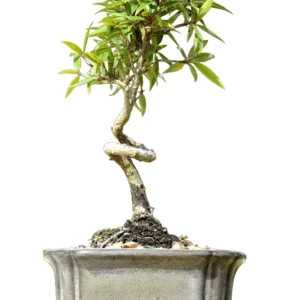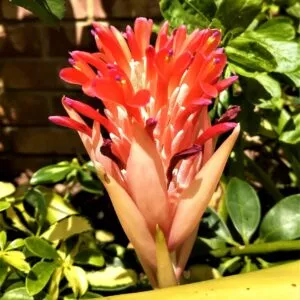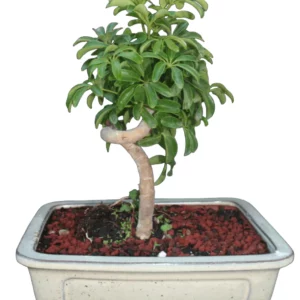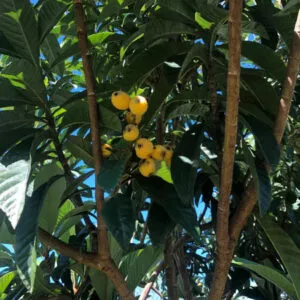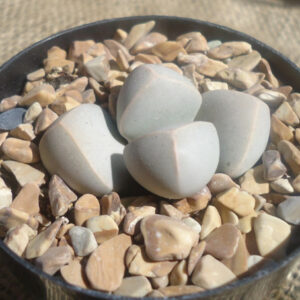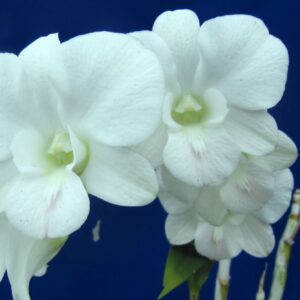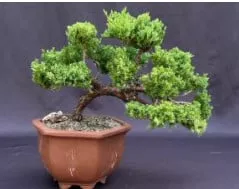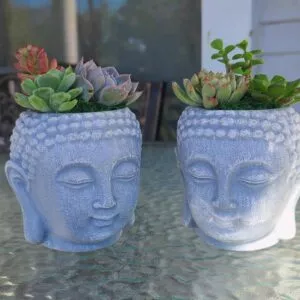No products in the cart.
Table of Contents
Monstera siltepecana or the silver monstera ‘El Salvador’ is a plant from the Monster genus native to Mexico and Central American countries.
The plant is considered a terrestrial creeper due to its internodes and aerial roots and grows well as a houseplant. The
The epiphytic vine has lance-shaped juvenile leaves with silver markings standing out against the dark green veins.
A note is that the Monstera siltepecana is very toxic to pets and humans.
Monstera Siltepecana Plant Care Basics
- Place in bright, indirect light.
- Provide with well-drained potting soil.
- Water when the top few inches of the soil is dry.
- Use a balanced houseplant fertilizer once a month during the growing season.
Provide your indoor plant with a moss pole or trellis, allowing it to climb.
Silver Monstera Care Guide Table

Silver Monstera Care Guide
Soil
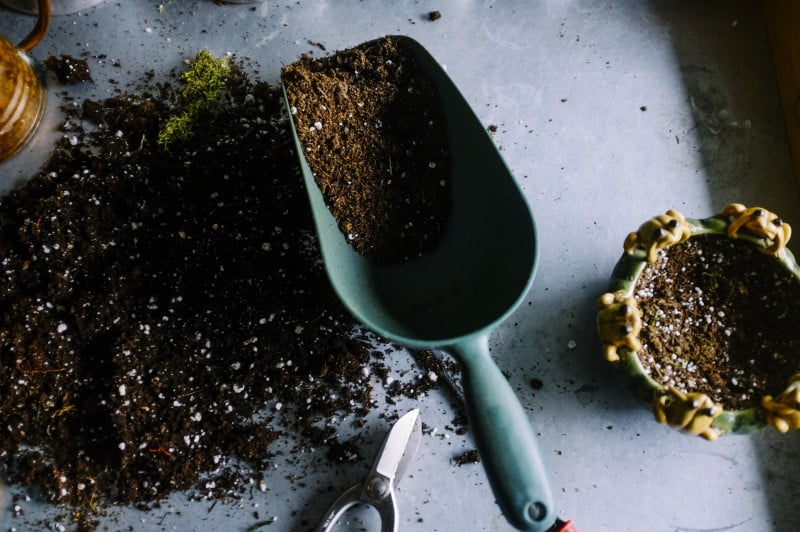
Monstera siltepecana requires a high organic matter potting mix. A mix of perlite, pumice, and sphagnum moss is best for the monstera siltepecana to survive and thrive. The important thing is a well-draining soil to prevent root rot.
Watering Monstera Siltepecana
Water your houseplant when you feel the top few inches of the soil dry. Avoid letting your Monstera siltepecana sit in water, leading to root rot.
Silver Monstera Light
Provide your Monstera siltepecana with bright, indirect light to thrive. This plant is susceptible to direct sunlight as it can scorch the leaves.
While it is an outdoor plant by nature, provide it with full to partial shade outdoors. Add a trellis or moss pole, allowing the vines to climb.
-
Free Shipping$72.60Sold By: BONSAI WORLD LLC
In stock
Coiled FICUS NERIOFOLIA Umbrella Bonsai Tree
Sold By: BONSAI WORLD LLC -
$8.00Sold By: Smoot's Farm
In stock
Succulent Echeveria Lilacina Ghost 4″ Pot Live Plant
Only 1 available and it’s in 1 people’s basketRated 4.89 out of 5 based on 27 customer ratings00Sold By: Smoot's Farm -
Free Shipping$39.99Sold By: Aloha Hawaii Orchids
$44.99In stock
Dendrobium Bangkok Pink Orchid Comes in 4″ Pot
Rated 4.65 out of 5 based on 268 customer ratings00Sold By: Aloha Hawaii Orchids -
Free Shipping$21.99Sold By: Gar-Zen Botanical Design
In stock (can be backordered)
Bromeliad Flaming Torch billbergia Ships Free
Only 6 available and it’s in 1 people’s basketRated 4.86 out of 5 based on 49 customer ratings00Sold By: Gar-Zen Botanical Design
Temperature & Humidity
Monstera siltepecana grows best in an area of 60 to 95 degrees F. Keep the humidity above 60 percent and place your plant away from drafty windows, cold, and hot/cold air vents. If the air is dry, you can put a humidifier near your plant to provide moisture.

Fertilizer
Use a balanced houseplant fertilizer to feed your Monstera siltepecana.
Dilute the fertilizer to half-strength to prevent root burn, and you can do this once a month during the growing season.
When fall arrives, stop fertilizing your plant. As winter turns to spring, you can keep an eye on your silver monsteras’ growth as it is a sign you need to start fertilizing again.
Pruning
You can trim away the damaged and dead leaves when you see them.
Your mature Monstera siltepecana is a climber that helps to prune them back when they outgrow their space or become leggy.
The best time to prune is in spring or summer when your plant grows actively, and avoid removing more than 25% of your plant.
We recommend taking the pruned portions to propagate new monstera plants.
Propagating Monstera Siltepecana
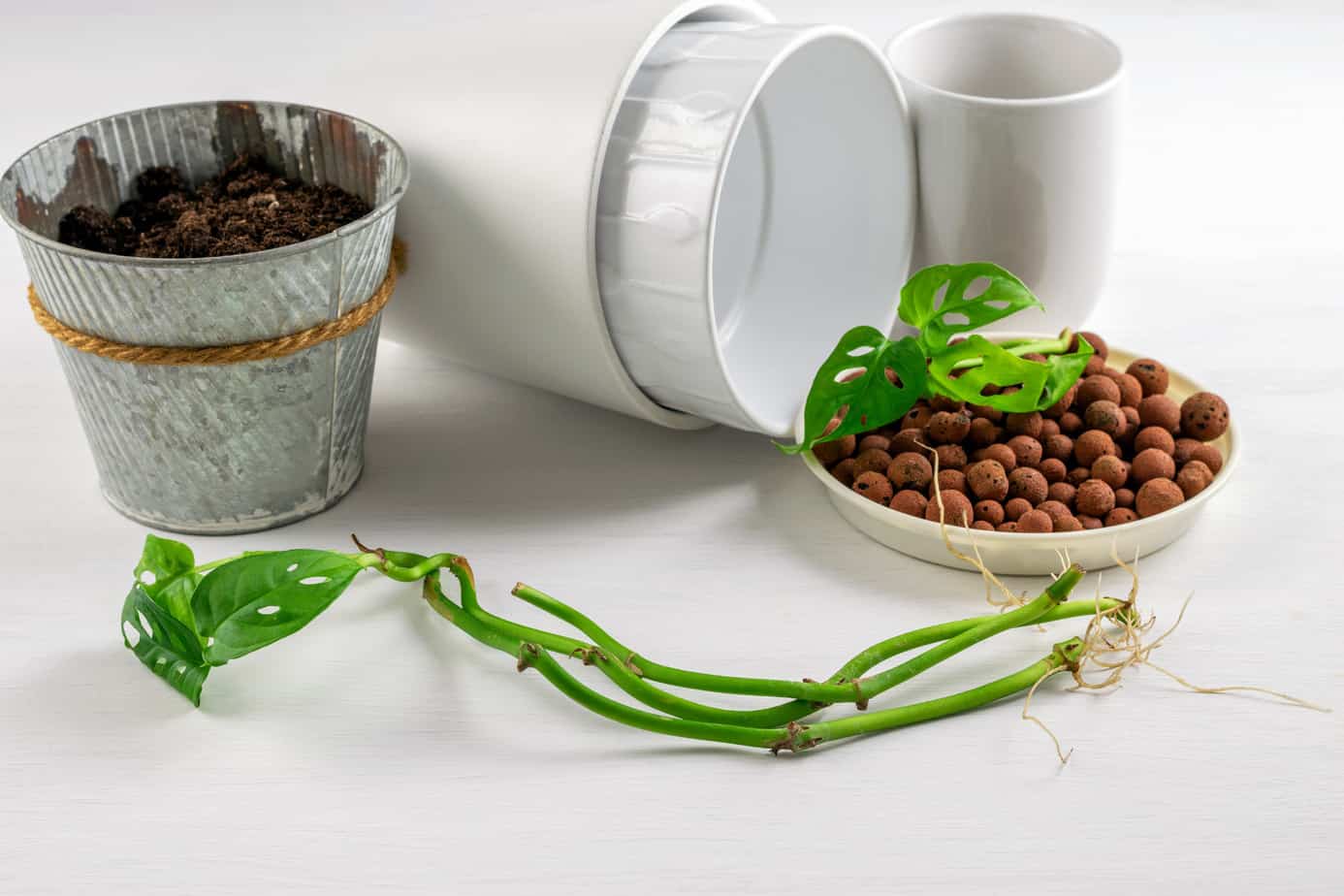
The best time to propagate Monstera siltepecana is in spring and summer. You can propagate silver monstera in water or soil. Here is how to use both methods:
Monstera Siltepecana Soil Progapagtion
- Collect some potting mix, a small plant pot, rooting hormone powder, water, and sterilized pruners.
- Take a cutting from a healthy stem on the mother plant with two leaves growing at the tip. The cutting should be around six inches long, taken below a leaf node. Remove the leaves on the lower part of the cutting.
- Fill the pot with the potting mix and some water to moisten, allowing excess water to drain.
- Poke a hole a couple of inches deep using your finger in the soil.
- You can dip the cut end into a rooting hormone and place the cutting in the soil to cover the lower half with nodes in the soil.
- Place your cutting in a bright spot with indirect light to keep it warm. When you notice new foliage, you know the cutting has rooted and care for your plant as usual.
Monstera Siltepecanna Water Propagation
You will need a small jar or glass with water and sterilized shears.
- Take a six-inch tip cutting from the mother plant and ensure it has two leaves at the end. Remove the leaves on the bottom.
- Fill up the glass or jar with tepid water and place your cutting in it by adding water to cover the nodes on the bottom half when submerged.
- Place in bright, indirect light and monitor the root development.
- When the roots are about an inch long, you can transfer the cutting to a pot and care for it.
-
$4.50Sold By: Cacti and Exotica
In stock
Mammillaria elongata—Copper King
Rated 4.98 out of 5 based on 59 customer ratings00Sold By: Cacti and Exotica -
Free Shipping$87.14Sold By: BONSAI WORLD LLC
Only 1 left in stock
Large Coiled Umbrella Bonsai Tree
Sold By: BONSAI WORLD LLC -
Free Shipping$20.24 – $44.99Sold By: Carlo's Plant Farm
In stock
10 LOQUAT SEEDS
Rated 5.00 out of 5 based on 22 customer ratings00Sold By: Carlo's Plant Farm -
$4.95Sold By: CTS Air Plants
In stock
Karoo Split Rock Lapidaria Margaretae Succulents
Only 62 available and it’s in 1 people’s basketSold By: CTS Air Plants
Potting and Repotting Monstera Siltepecana

You can freshen up the Monstera siltepecana soil by repotting the plant every two to three years or when root-bound. A root-bound plant’s roots will grow from the holes at the bottom or get crowded at the top of the soil, leading to stunted growth.
Provide your houseplant with good drainage, and opt for one size up when choosing a container. We recommend pots made of plastic or ceramic, but avoid using other porous materials like terracotta as they will wick the moisture away too fast.
Monstera Siltepecana Varieties and Similar Plants
There are approximately 60 species, most of which can be found in the tropical areas of Central America. One of the most popular varieties of Monstera is the Monstera Deliciosa.
The Monstera Deliciosa was primarily cultivated because its fruit is proven to be edible.
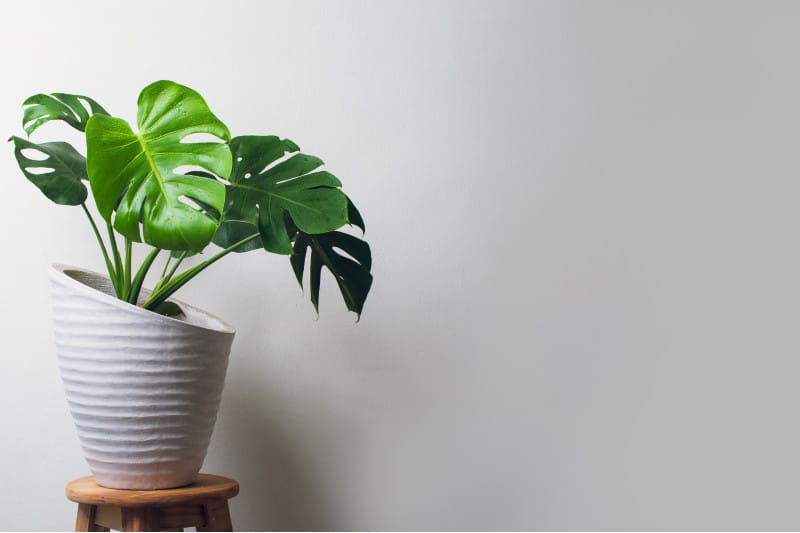
Monstera Siltepecana Common Problems
We recommend keeping an eye on your plant for the following problems to catch symptoms in time:
Yellow Leaves
When you notice leaves turning yellow, it is a sign of overwatering but can also be underwatering. It is best to check the soil to see if it is soaking wet or dry. For underwatering, you can water your plant, allowing excess water to drain from the pot. For overwatering, leave the plant to dry out for a few days until you feel the top few inches dry and water again.
Leggy Growth
If you notice your monstera stems growing long with leaves spaced far apart, your plant needs to receive more light. Once the vines reach a light source, it becomes leggy (etiolated), and the foliage becomes sparse. You can prune that leggy portion away and move it to more light.
Leaf Tips Browning
Browning leaf tips are a sign of lacking moisture around the plant. To create a humid environment, you can group your plant with other tropical plants that thrive in humidity. Or you can use a humidifier.
Frequently Asked Questions
Yes, the Monstera Siltepecana is a fast-growing houseplant.
The effective way to get rid of bugs is to keep infested plants away from Monstera. If the bugs already infest the plant, neem trees can help you ward off these insects.
When the Monstera matures, it starts to have tiny holes in its leaves. If the monstera plant got fully developed, this variety would manifest more monstera fenestrations.
Yes, the Monstera siltepecana is considered very toxic to pets and humans. It is essential to keep it out of reach of children and pets.
Use a balanced houseplant fertilizer to feed your Monstera siltepecana. Dilute the fertilizer to half-strength to prevent root burn, and you can do this once a month during the growing season. When fall arrives, stop fertilizing your plant. As winter turns to spring, you can keep an eye on your monsteras’ growth as it is a sign you need to start fertilizing again.
Whether you want to buy, sell, or reach out to other plant enthusiasts, Plantly is the right place to be!
-
$4.95Sold By: Willows Bonsai
In stock
Lot of 25 Green Japanese Maple Seeds
Only 98 available and it’s in 2 people’s basketSold By: Willows Bonsai -
Free Shipping$39.99Sold By: Aloha Hawaii Orchids
$44.99In stock
Dendrobium Full Moon ‘White’ They Come In A 3″ Pots
Rated 4.65 out of 5 based on 268 customer ratings00Sold By: Aloha Hawaii Orchids -
Free Shipping$370.59Sold By: BONSAI WORLD LLC
Only 1 left in stock
Juniper Bonsai Tree – Trained (juniper procumbens nana)
Sold By: BONSAI WORLD LLC -
Free Shipping$17.50Sold By: D&D simplicity products
In stock
Buddha Head Planter with live succulent
Sold By: D&D simplicity products
